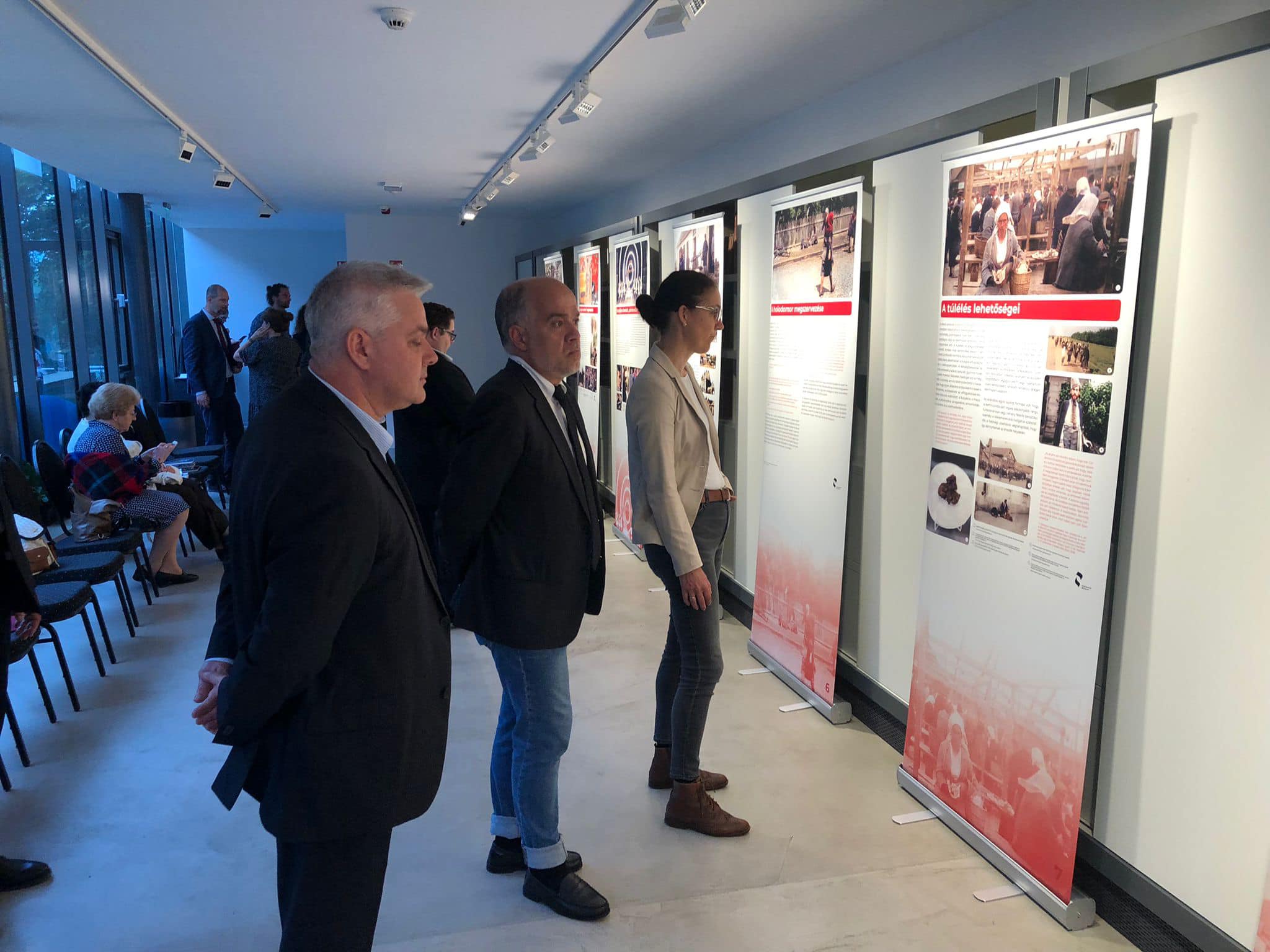The exhibition of our museum about the Holodomor opened in Budapest
On Tuesday, June 6, the opening of our exhibition “HOLODOMOR – Soviet genocide against the Ukrainian people” was held in Budapest.
This became possible thanks to the cooperation of the museum with the Committee of National Remembrance of Hungary.
Andrii Ivanets, an employee of the National Museum of the Holodomor Genocide, Yaroslava Khortiani, the Chairman of the Society of Ukrainian Culture in Hungary, a member of the board of the SCU, Istvan Balog, the Temporary Charge d’Affaires of Ukraine in Hungary, and Aaron Mate, the Vice-President of the National Commemoration Commission of Hungary opened the exhibition.
In his speech, Istvan Balog emphasized the importance of preserving the memory of the millions of Ukrainians destroyed by the communist totalitarian regime during the Holodomor and compared these actions of the criminal Soviet government with the events of today, when Russia is once again carrying out an open and cynical genocide of the Ukrainian people.
In his speech, Aaron Mate spoke about the Holodomor in the broad context of genocides and confrontations of modern times.
Leading researcher of the National Museum of the Holodomor-genocide Andrii Ivanets recalled that Hungary was one of the first countries to recognize the Holodomor as genocide officially: in 2003, all Hungarian parliamentarians present in the hall unanimously voted for the decision to recognize the policy of the communist regime in Ukraine as a crime of genocide. The Ukrainian diaspora played a crucial role in this.
“It was a little unusual to spend quiet nights in Budapest because I came from Kyiv, which since the beginning of May, Russia has been shelling with missiles and shaheds almost every night, and sometimes during the day. And when you wake up at night from another explosion or an air-raid alarm, you involuntarily think: would Russia start a new genocidal war against Ukraine if most countries had condemned the crime of genocide in 1932-1933, same as Hungary, Estonia, Canada did several decades ago, Australia?” a representative of the Holodomor Museum added.
It is noteworthy that on the day of the exhibition opening, Russia committed another terrible war crime – blew up the dam of the Kakhovka HPP, as a result of which dozens of settlements were flooded, hundreds of residential buildings were destroyed, thousands of hectares of agricultural land were under water, and flora and fauna of the region were affected.
Andrii Ivanets emphasized the necessity and inevitability of punishing the aggressor for its crimes, expressing hope that at this historical stage, thanks to the combined efforts of Ukraine and the civilized world, it will be possible to stop the implementation of the genocidal plans of the Russian leadership to destroy the Ukrainian nation and the Ukrainian state. “But in order for serious crimes to not be repeated in Europe, the actions of the aggressor state must be given a legal assessment in courts and tribunals,” he noted.
The exhibition about the Holodomor in Budapest will be open until July. You can visit it for free.
